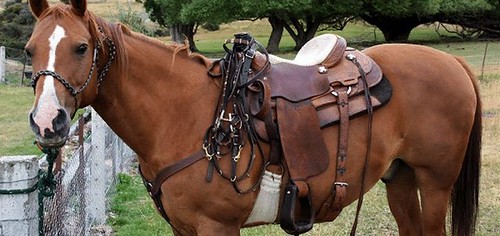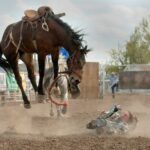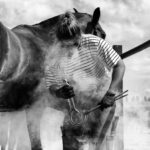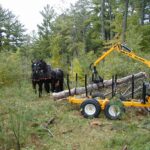Mastering the art of riding requires not only skill and practice but also the ability to adapt to different saddles. Whether you’re transitioning from English to Western riding, trying a dressage saddle for the first time, or exploring bareback riding, each saddle type demands specific body positioning for optimal performance and comfort. The relationship between rider, saddle, and horse creates a dynamic system where small adjustments can make remarkable differences in communication, balance, and overall riding experience. This comprehensive guide will help you understand how to adjust your position across various saddle types, ensuring both you and your equine partner can perform at your best while maintaining comfort and proper alignment.
Understanding Saddle Design and Its Impact on Rider Position
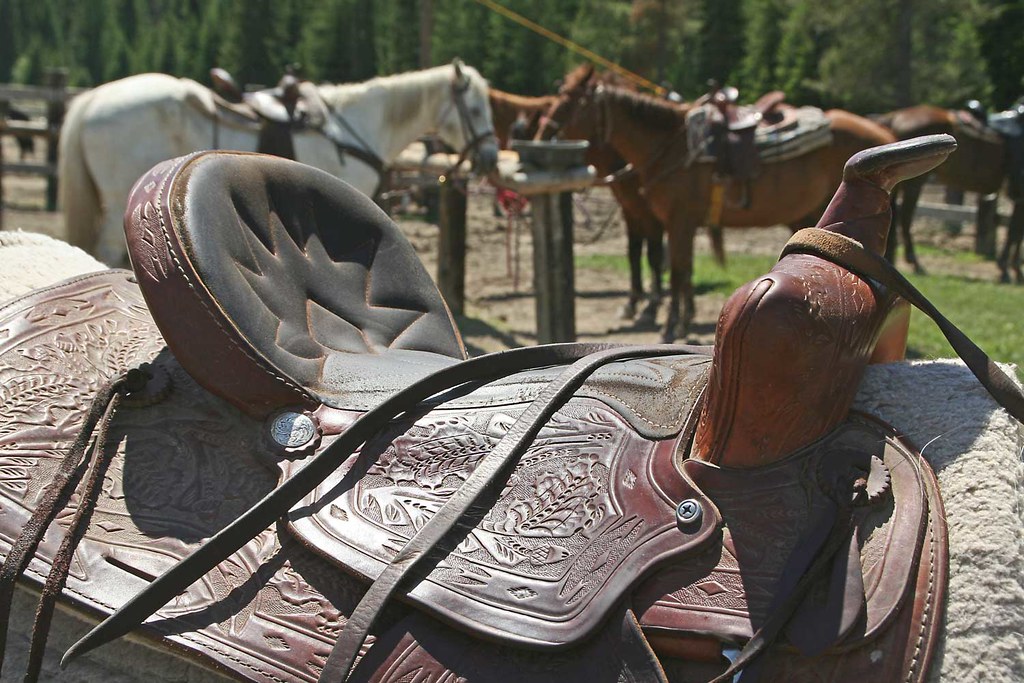
Each saddle is designed with specific disciplines and purposes in mind, directly influencing how a rider should position themselves. The deep seat of a dressage saddle, for example, encourages an upright position with a long leg, while a jumping saddle’s forward-set flaps accommodate the shorter stirrup length needed for jumping position. Western saddles, with their larger surface area and horn, require a more relaxed position with weight distributed differently compared to English saddles. Before making any adjustments to your riding position, take time to understand the fundamental design elements of your saddle and how they’re intended to support specific riding activities and positions. This knowledge provides the foundation for making intelligent adjustments rather than fighting against the saddle’s inherent design.
Basic Positioning Principles That Apply Across All Saddles
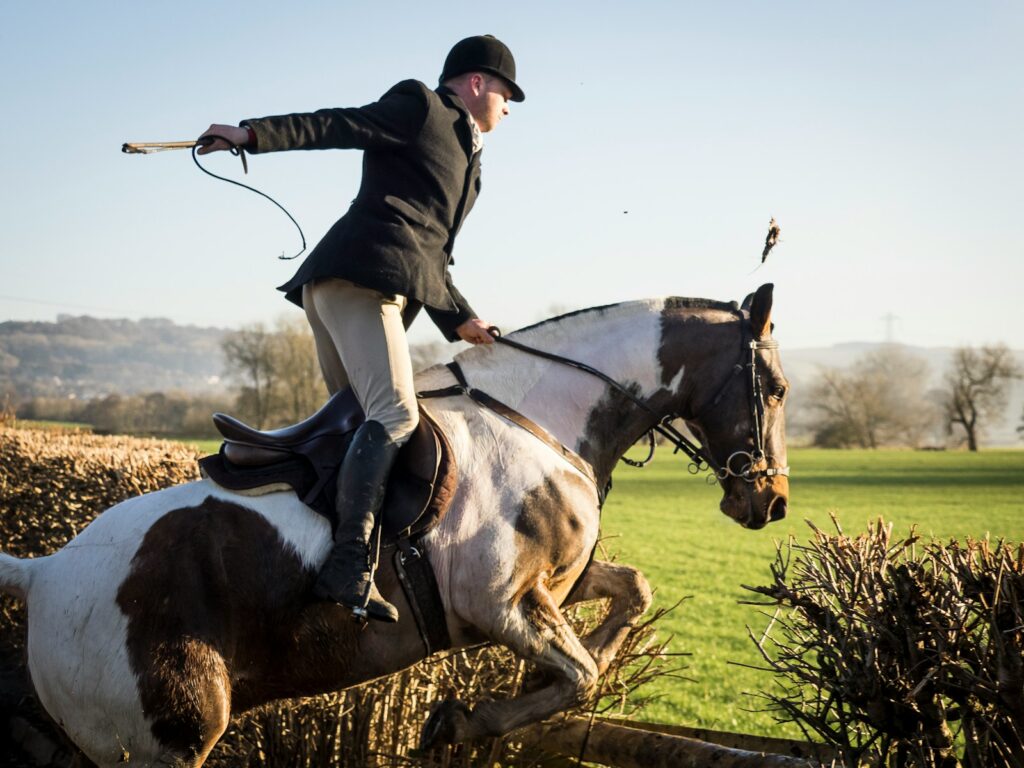
Despite the variations between saddle types, certain positioning fundamentals remain consistent regardless of what you’re sitting on. Your weight should always be centered through your seat bones rather than tipping forward onto your pubic bone or backward onto your tailbone. Your spine should maintain its natural curves without excessive arching or rounding, and your shoulders should be relaxed and positioned directly above your hips. A vertical line should theoretically be able to pass through your ear, shoulder, hip, and heel when viewed from the side, though the exact angle of this line may vary slightly depending on the saddle type. These universal principles serve as your baseline, with specific saddle-related adjustments building upon this foundation rather than replacing it entirely.
Transitioning from English to Western Saddles
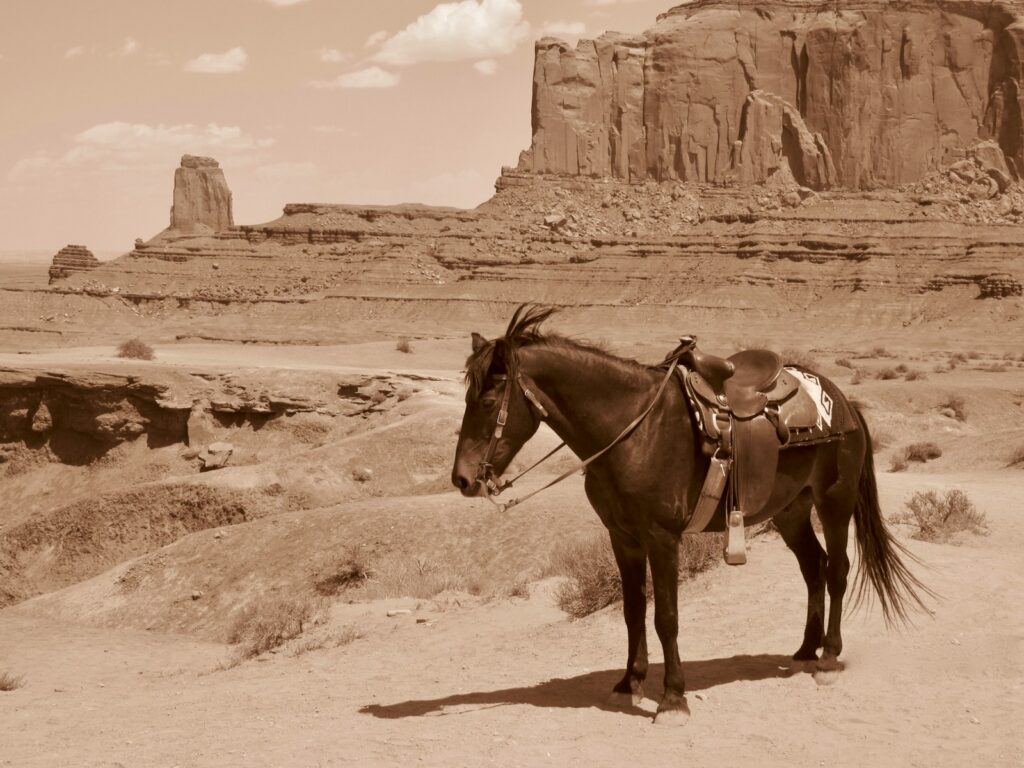
Moving from an English to a Western saddle requires significant position adjustments due to fundamental design differences. In a Western saddle, you’ll need to adopt a more relaxed position with your legs extended further forward than in an English saddle. Your stirrups will be positioned differently, with your feet pushed slightly more forward in the stirrups so the ball of your foot (rather than the ball and toes) rests on the stirrup. Your weight distribution changes as well, with more emphasis on sitting deeply into the saddle’s pocket rather than balancing in a half-seat position common in some English disciplines. Additionally, you’ll hold the reins differently—typically with one hand rather than two—which affects your upper body position and balance. Allow time for your body to adjust to these changes, as muscle memory from your English riding experience may initially make the Western position feel unnatural.
Adapting to Dressage Saddles
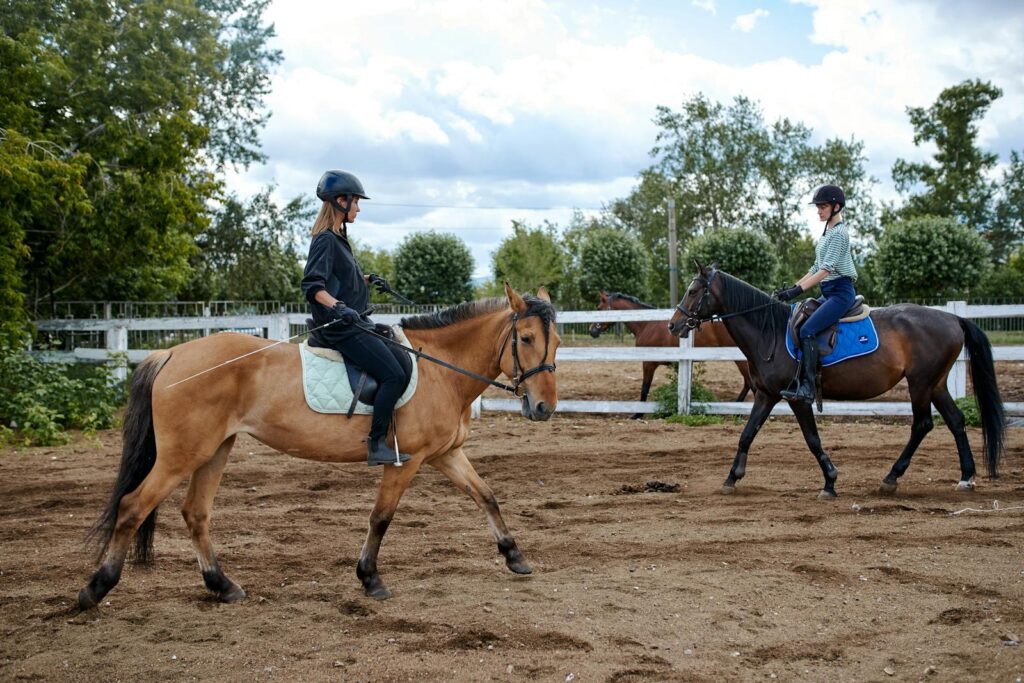
Dressage saddles feature deep seats and long, straight flaps that facilitate the classical dressage position essential for this discipline. When riding in a dressage saddle, position your pelvis in a neutral position that allows your lower back to maintain its natural curve without excessive arching or flattening. Your legs should hang long with minimal knee angle, enabling your heel to drop naturally below your toe without forcing it. Position your upper body upright but not rigid, with your shoulders aligned directly over your hips and your chest open. The dressage saddle’s design encourages this aligned position, but riders accustomed to jumping or all-purpose saddles often need time to adjust to the deeper seat and longer leg position. Focus on relaxing into the saddle rather than perching on top of it, allowing your sit bones to make solid contact with the saddle’s seat.
Finding Balance in Jump Saddles
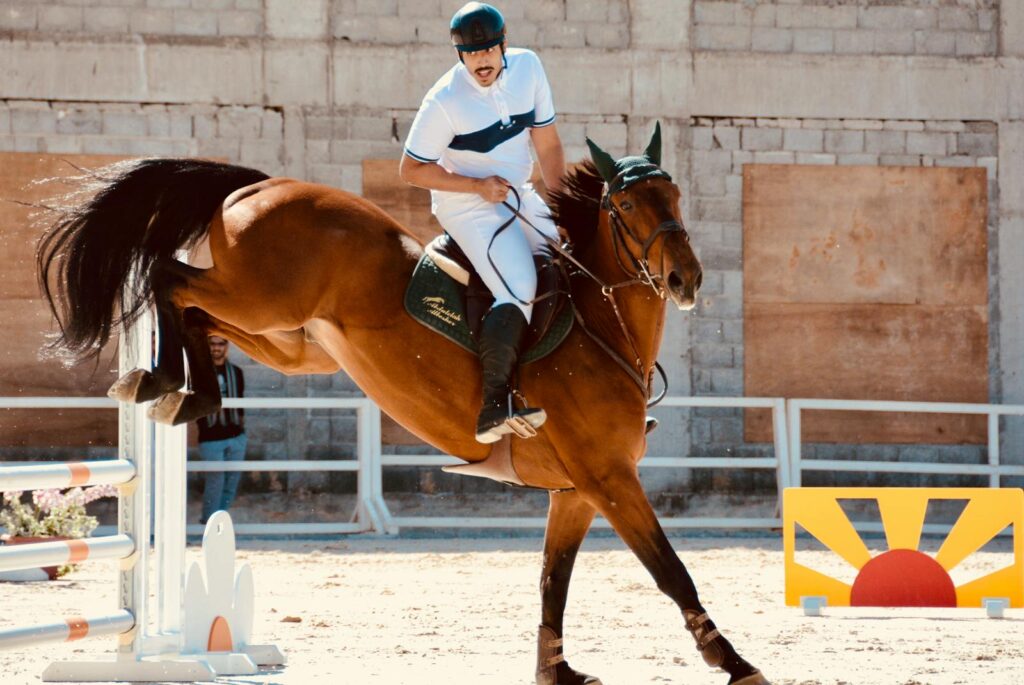
Jump saddles feature forward-cut flaps and a flatter seat that accommodates the forward-leaning position necessary for safely clearing obstacles. When riding in a jump saddle, your stirrups will be shorter than in dressage or all-purpose saddles, creating a more pronounced angle at your knee and hip. Even when not actively jumping, your position in this saddle will naturally be more forward, with your weight distributed more through your thighs and less heavily on your seat bones. The key to successful position in a jump saddle is finding the balance between being ready to assume jumping position while maintaining enough depth in the saddle for flat work. Your upper body should remain flexible, ready to fold forward from the hip during jumping phases while maintaining core engagement for stability. Practice transitioning between your regular seated position and your two-point or jumping position to develop the muscle memory needed for smooth adjustments during riding.
Mastering Endurance and Trail Saddles
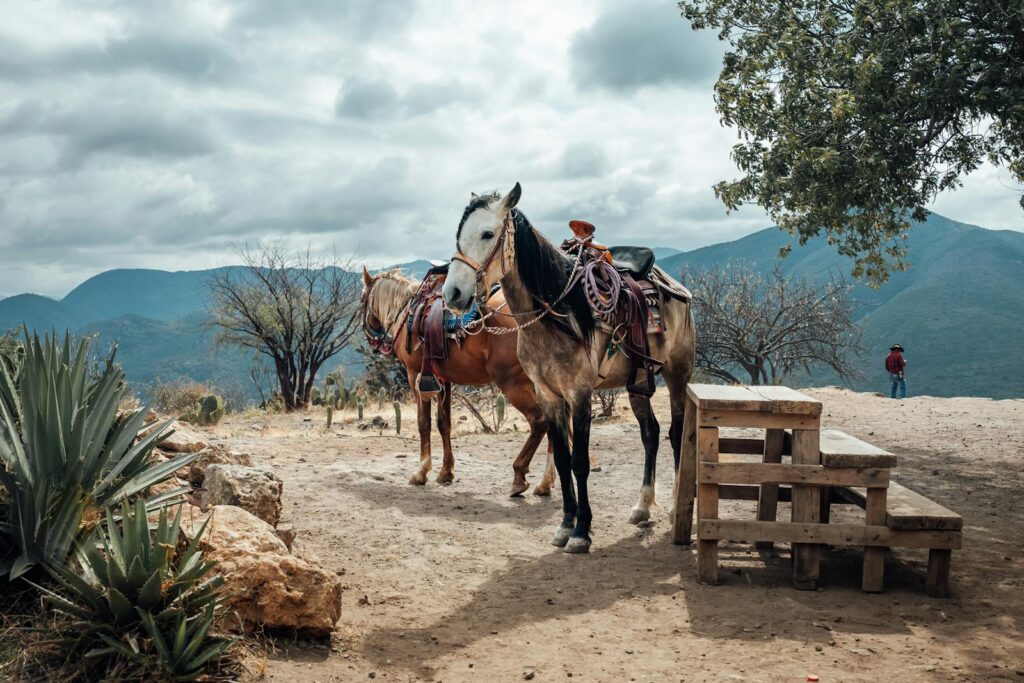
Endurance and specialized trail saddles prioritize comfort for long hours in the saddle while providing security on varied terrain. These saddles often feature a more moderate design that falls between Western and English styles, requiring a balanced position that can be maintained comfortably for extended periods. When riding in an endurance saddle, focus on a neutral spine position that you can sustain without fatigue, avoiding both excessive hollow-back postures and rounded-shoulder positions that become painful over time. Your weight should be evenly distributed between your seat bones and thighs, with light contact through your lower leg. Many endurance saddles feature built-in knee blocks or thigh rolls that help secure your position; work with these features rather than fighting against them. Regular position checks throughout long rides help prevent slumping or asymmetrical postures that can develop as fatigue sets in during extended trail adventures.
Adjusting Stirrup Length Appropriately
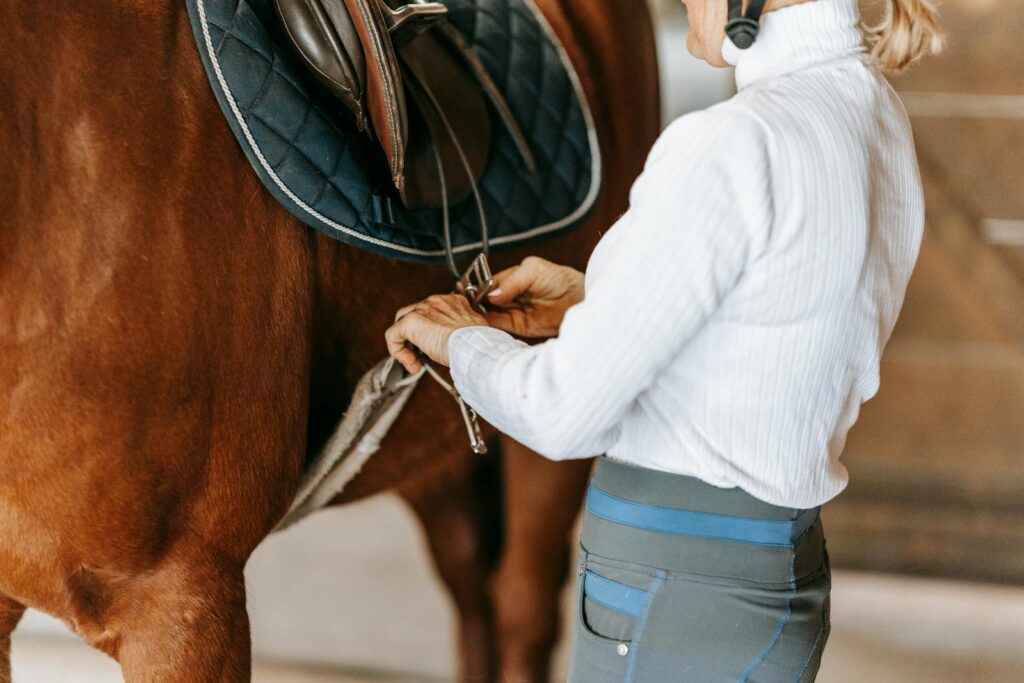
Stirrup length dramatically influences your entire riding position and must be adjusted appropriately for each saddle type and riding discipline. For dressage, longer stirrups create the classic long-leg position with a 135-degree angle at the knee, while jump stirrups might be 2-4 holes shorter to facilitate the forward jumping position. Western riders traditionally ride with slightly longer stirrups than their English counterparts in similar disciplines. The correct stirrup length allows your leg to hang naturally against the horse with your weight sinking into your heel without excessive stretching or cramping. When determining proper stirrup length for any saddle, remove your feet from the stirrups and allow your legs to hang freely—the stirrup should hit approximately at your ankle bone or slightly above. Remember that stirrup length may need minor adjustments based on your specific body proportions, the horse’s barrel width, and the activity you’re performing.
Bareback Riding Position Fundamentals
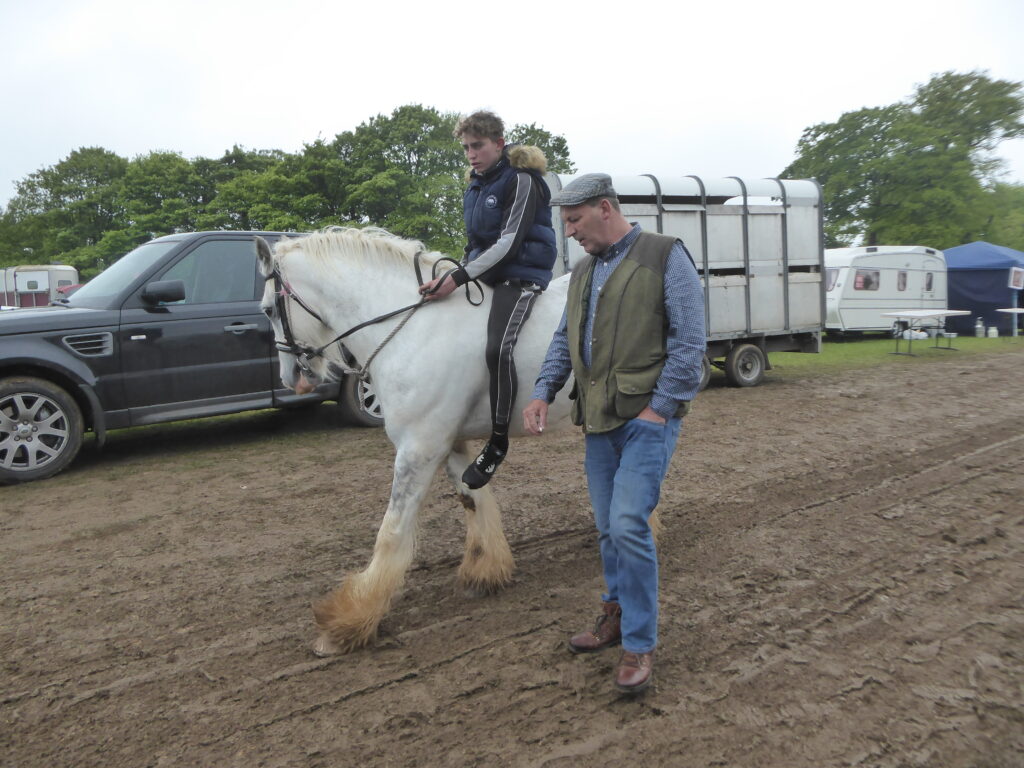
Riding without a saddle eliminates the positioning support that saddles provide, requiring greater core strength and balance but offering unparalleled feel for your horse’s movement. When riding bareback, your position must adapt to the absence of stirrups and the contours of your horse’s back rather than a manufactured seat. Sit slightly further forward than you might in a saddle, positioned just behind the horse’s withers where the back creates a natural pocket. Without stirrups to support your lower leg, focus on keeping your legs long and wrapped gently around the horse’s barrel, using core engagement rather than gripping with your knees to maintain security. Your upper body position becomes even more critical when riding bareback—maintaining alignment from head to hip helps distribute your weight evenly across the horse’s back. Many riders find that regular bareback sessions improve their position and balance when returning to saddle work, as bareback riding quickly reveals and corrects positional flaws.
Adapting to Treeless Saddles
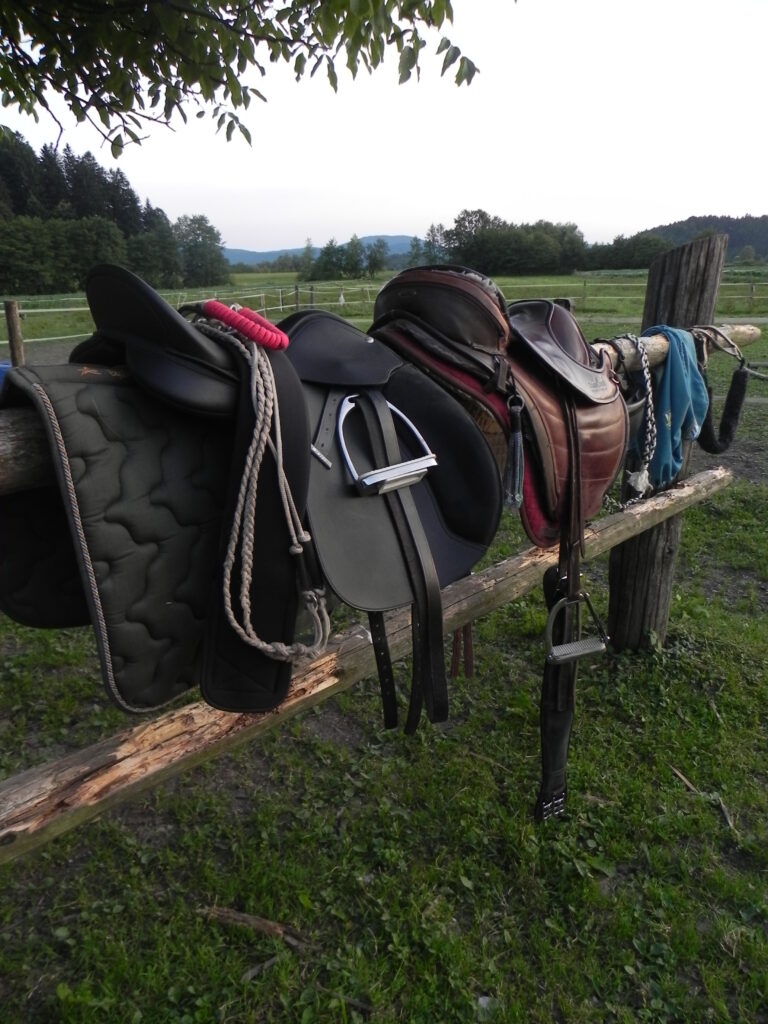
Treeless saddles, which lack the rigid internal frame of traditional saddles, require specific positioning adaptations to ride effectively. These saddles conform more closely to the horse’s back and the rider’s seat, creating a unique feel that falls somewhere between traditional saddles and bareback riding. When riding in a treeless saddle, expect to feel more of your horse’s movement and skeletal structure than you would in a treed saddle. Your position should emphasize even weight distribution to avoid creating pressure points on your horse’s back, with particular attention to centering your weight over the horse’s center of gravity. Many riders initially mistake the flexibility of treeless saddles for instability, leading them to grip with their legs or brace in their upper bodies. Instead, focus on relaxing into the saddle and allowing your body to move with the horse, using your core for stability rather than tension in your extremities. Treeless saddles often require a period of adjustment but can ultimately lead to improved body awareness and positioning sensitivity.
Side Saddle Position Essentials
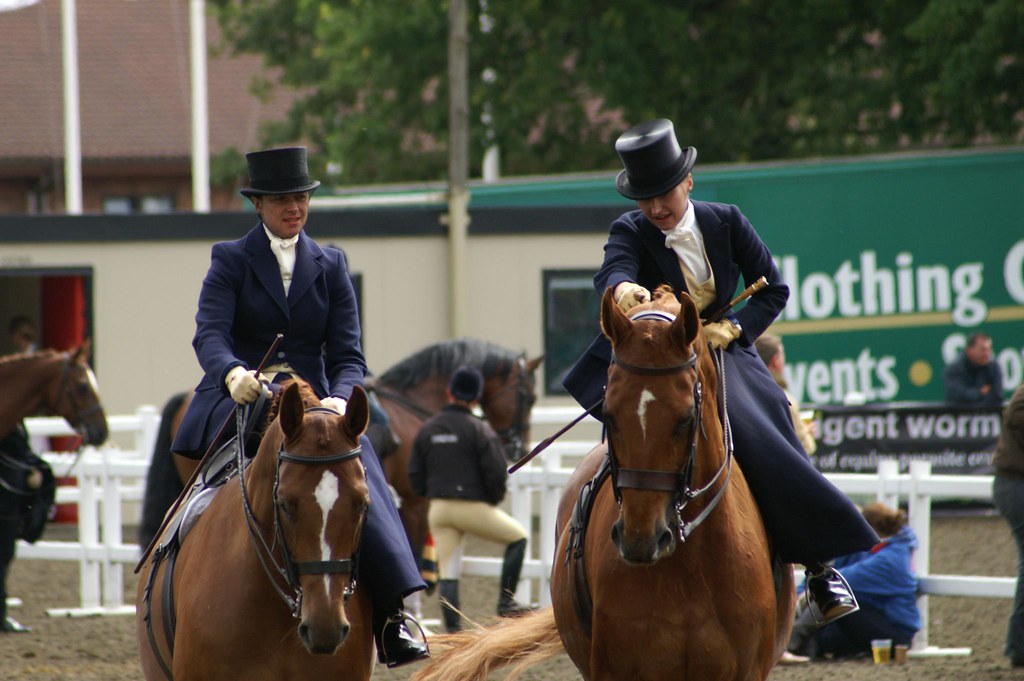
Side saddle riding presents unique positioning challenges, as the rider sits with both legs on the same side of the horse rather than astride. When riding side saddle, your right leg (assuming a right-handed side saddle) hooks around the upper pommel or “fixed head” while your left leg rests on the leaping horn or “lower pommel,” creating a secure position despite the asymmetrical arrangement. Your torso should remain squared to the horse’s shoulders despite your legs being positioned to one side, requiring conscious attention to avoid twisting your spine. Weight distribution becomes particularly important in side saddle riding—focus on keeping your weight centered over the horse’s spine rather than allowing it to slide toward the outside. The traditional side saddle position includes a straight, elegant upper body carriage with shoulders level and head positioned directly above the spine. Though side saddle riding looks dramatically different from conventional riding, many of the same principles apply: a balanced, aligned position that allows effective communication with the horse remains the ultimate goal.
Correcting Common Position Problems Across Saddle Types
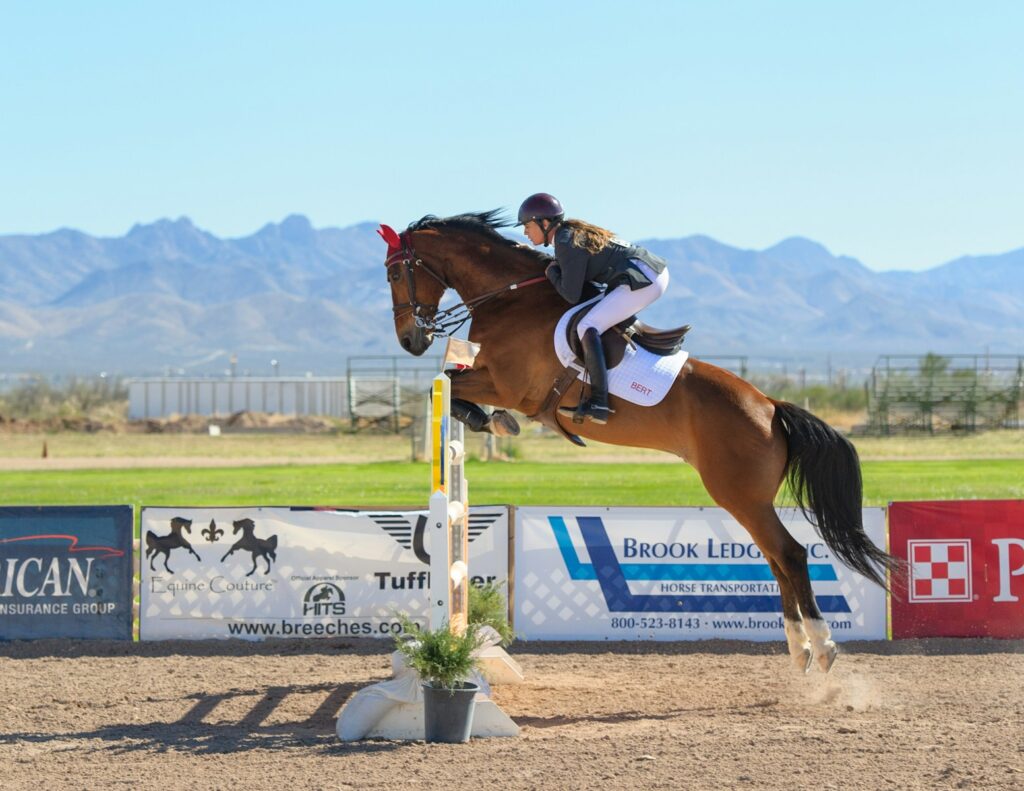
Certain position problems tend to occur regardless of saddle type and require similar correction approaches. The chair seat position—where the rider’s feet are thrust forward with the seat pushed back—creates ineffective riding in any saddle and can be corrected by focusing on aligning the shoulder, hip, and heel. Similarly, rounded shoulders and collapsed chest positions interfere with effective riding in all disciplines, requiring conscious attention to opening the front of the body and engaging the upper back muscles. Another universal issue is the “perched” position, where riders balance on their crotch rather than sitting deeply on their seat bones, creating instability and discomfort for both horse and rider. Addressing these fundamental position problems provides a foundation for successful saddle-specific adjustments. Remember that position flaws often stem from either incorrect understanding of proper position or physical limitations in the rider’s body—working with a qualified instructor can help identify which factor is at play in your specific situation.
Using Proper Posture to Enhance Saddle Fit Experience
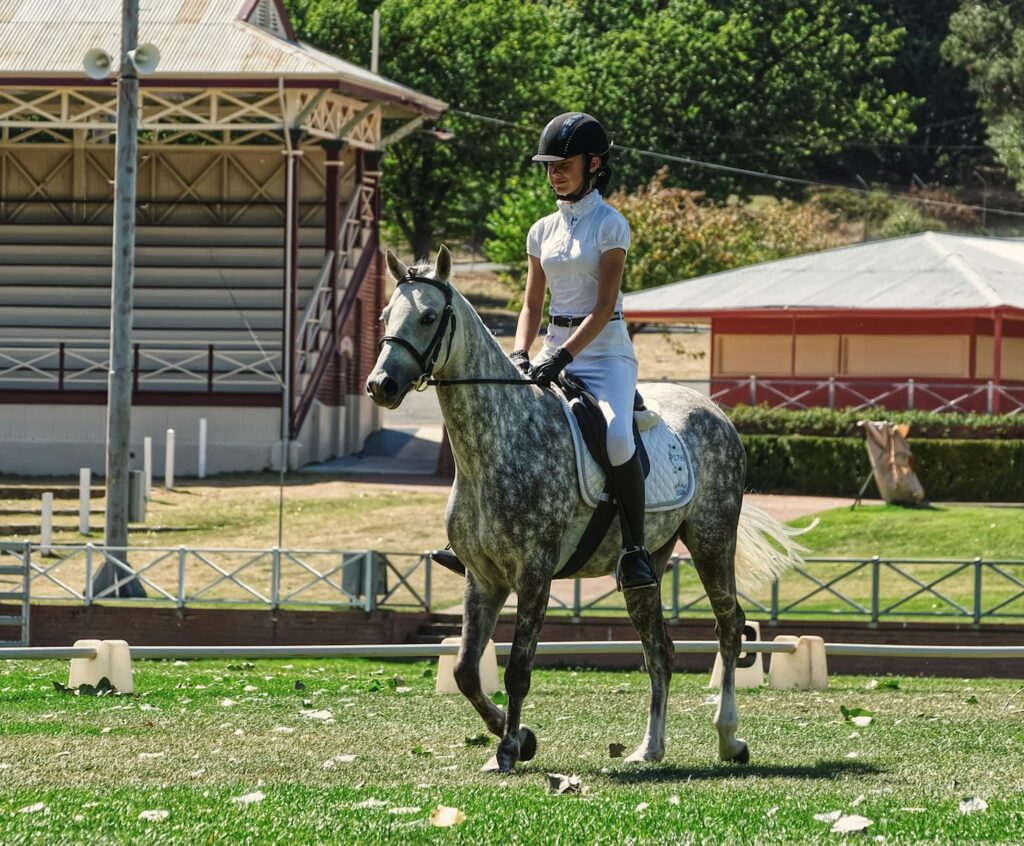
Your riding position directly impacts how a saddle fits both you and your horse, making proper posture crucial to the overall riding experience. A slouched position can cause the saddle to tip forward, creating pressure on the horse’s withers, while an overly arched back can force the cantle down and cause pressure near the horse’s loins. When transitioning between saddle types, be particularly mindful of how your posture affects the saddle’s position on the horse’s back. If a saddle feels uncomfortable despite being the correct size and style, examine your riding position before assuming the saddle is problematic. Postural awareness becomes especially important when riding in minimalist saddles like treeless designs or endurance models, which have less inherent structure to maintain their position regardless of rider asymmetries. Working with mirrors, video recordings, or a ground person can provide valuable feedback about how your posture affects the saddle’s position and, consequently, your horse’s comfort and movement.
Physical Conditioning for Position Adaptability
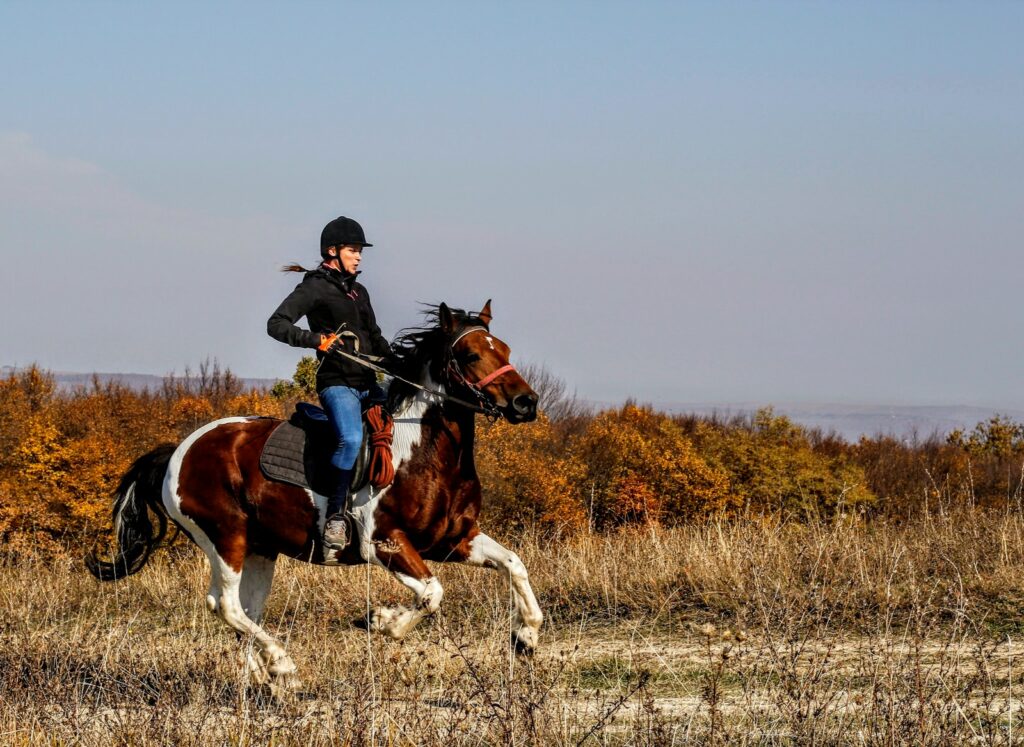
Transitioning between different saddle types requires physical adaptability that many riders underestimate. Each saddle position utilizes different muscle groups and demands specific types of flexibility. Dressage’s long-leg position requires excellent hip flexibility and core strength, while jumping’s forward position demands strong quadriceps and lower back stability. Riders who frequently switch between saddle types benefit from cross-training that addresses the full range of muscles used across riding disciplines. Off-horse exercises like yoga, Pilates, and targeted strength training can significantly improve your ability to adapt to different saddle positions without discomfort or fatigue. Pay particular attention to core strength, hip mobility, and lower back flexibility, as these areas affect riding position regardless of saddle type. Remember that physical limitations often manifest as position problems—what looks like poor riding technique may actually be a flexibility or strength issue that requires targeted physical conditioning to resolve.
Progressive Adaptation Techniques for New Saddles
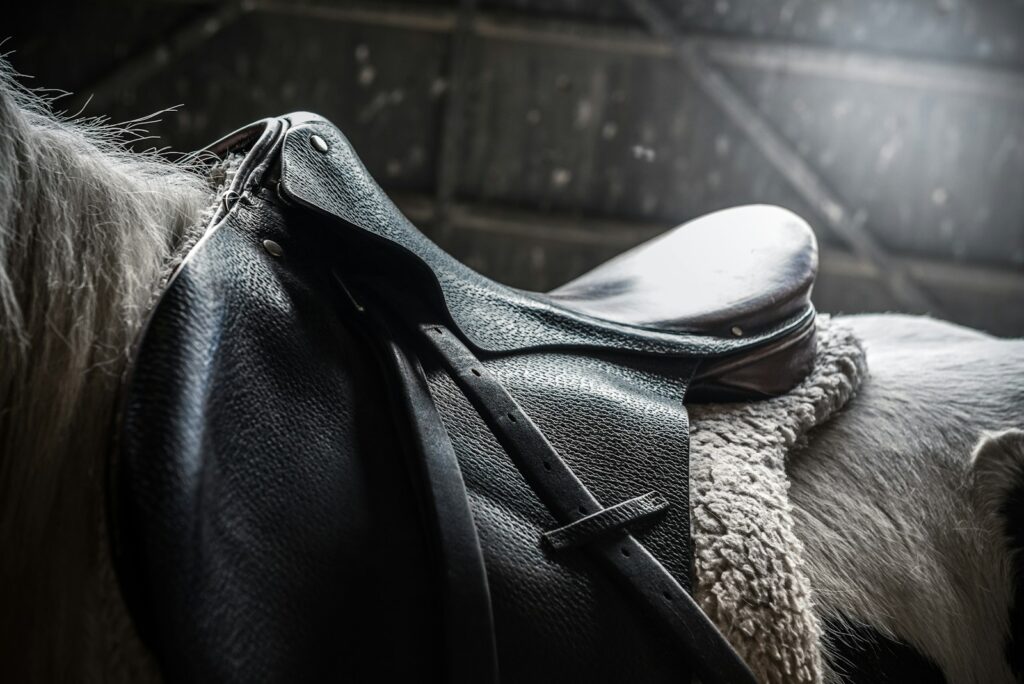
When transitioning to a dramatically different saddle type, gradual adaptation yields better results than abrupt changes. Begin with shorter sessions in the new saddle, focusing exclusively on position work at slower gaits before progressing to more demanding activities. Consider alternating between familiar and new saddle types during the transition period, allowing your body to develop new muscle memory without excessive fatigue or discomfort. Some riders find it helpful to work without stirrups initially in a new saddle, focusing first on finding the correct seat position before adding lower leg positioning to the equation. Position adaptations can also be practiced off the horse using saddle stands or positioning chairs designed for rider training. These progressive adaptation techniques allow your neuromuscular system to develop new patterns gradually rather than forcing immediate changes that often lead to tension and compensatory movements. Be patient with yourself during these transitions—position changes that feel awkward initially will become second nature with consistent, mindful practice.
Addressing Horse Response to Position Changes

Horses are remarkably sensitive to rider position changes and often respond dramatically when a familiar rider suddenly sits differently due to a saddle change. Your horse may initially seem confused or resistant when you adjust your position for a new saddle type, as the pressure patterns and weight distribution they’ve grown accustomed to have changed. When transitioning between saddle types, allow your horse time to adjust to how you’re sitting and the different ways your aids are being applied from the new position. Start with basic, familiar exercises rather than demanding work while both you and your horse adapt to the changed dynamics. Be particularly attentive to your horse’s feedback during these transitions—stiffness, resistance, or unusual behaviors often indicate that your position needs further refinement or that the horse is experiencing discomfort from your adjusted position. The most successful saddle transitions address both rider and horse adaptation simultaneously, recognizing that position changes affect the entire partnership rather than just the human element.
Finding the optimal position for different saddles is both an art and a science, requiring body awareness, technical knowledge, and patience. By understanding the fundamental design principles behind various saddle types and making thoughtful adjustments to your position, you can enhance both your riding effectiveness and your horse’s comfort across disciplines. Remember that position changes take time to internalize—what feels awkward initially often becomes second nature with consistent practice and mindful riding. Whether you’re a versatile rider who frequently switches between saddle types or someone making a significant discipline change, investing time in proper position adaptation pays dividends in improved performance, reduced discomfort, and a happier equine partner. The journey toward positional mastery is ongoing, with even the most experienced riders continuously refining their seat across the diverse world of equestrian saddles.

